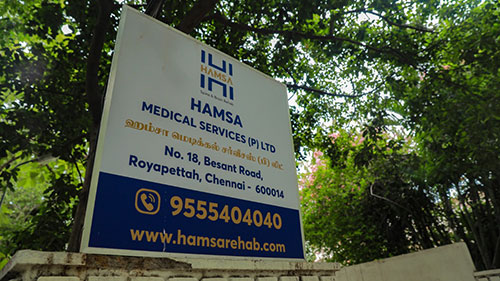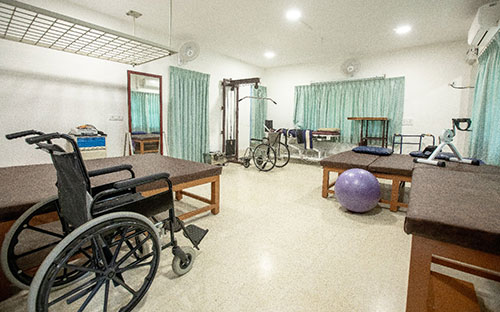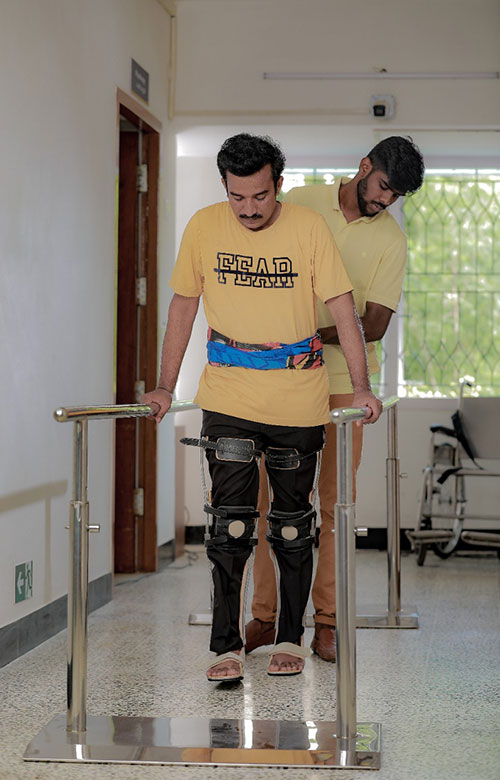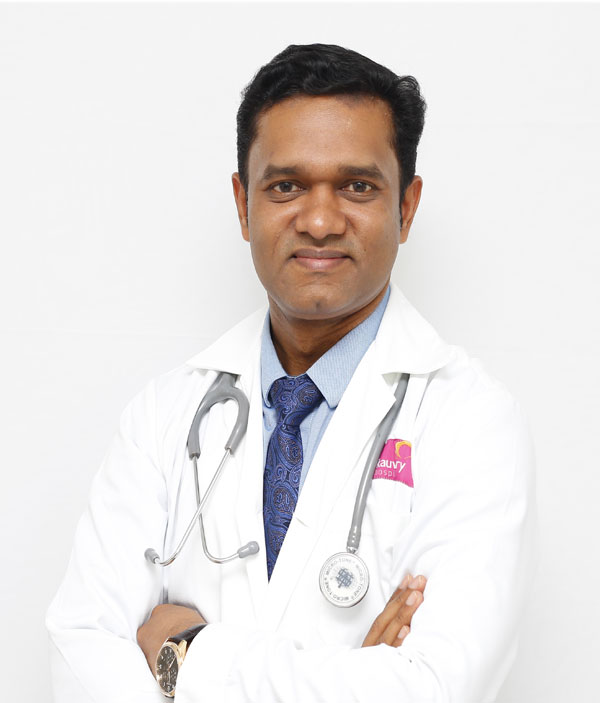


When a 53-year-old male was rushed to our spine department at late hours of the day with pain in the upper back and sudden onset of weakness in both legs and numbness below chest level, there was a lot of anxiety and panic among the patient’s family. An urgent MRI done within 30 minutes of admission showed destruction of thoracic vertebral bone with pus severely compressing the spinal cord. In the next 30 minutes, the patient was shifted to the operating theatre, and surgery was done to stabilize the spinal bone, let out the pus and relieve the spinal cord compression. This timely emergent intervention is vital as the initial 8 hours is the golden period to avoid permanent paralysis.
The next day, the patient had significant symptomatic improvement, and the entire medical team was elated as their burning the mid-night oil had shown good results. But the patient and his family were still aghast as he still could not walk. The battle is over, but the war is not. However, a part of the treatment was over, and there was a lot more to address – intensive rehabilitation, nutritional care, psychological support to patient and family, and regaining the previous activity level. If sent home, not even a quarter of these goals can be achieved. It needs a structured program to fill in this huge void. So once the patient was out of intensive medical care, he was relocated to HAMSA Rehab Center.
Post-operative spine rehabilitation is very much essential for the transition between hospital and home. Early and effective rehabilitation helps to gain independence in life. During the admission at HAMSA rehabilitation, he had complaints like operative site pain, decreased muscle strength, impaired balance, dependency on functional activities, transfers & ADL, hamstring tightness and affected gait pattern. Initially, he was able to walk with 2-person support. Goals were set based on the deficits. He was motivated by the rehab team and family members to achieve the goals. He stayed as an in-patient for 2 weeks and underwent physiotherapy which included deep breathing exercises, strengthening exercise, balance training, gait training, aerobic training, ADL training and functional training. Bladder training was done post-surgically, and he was made to void within one week of admission at HAMSA without any difficulty.
At the time of discharge, he had lesser pain in his back. The patient bilateral muscle strength improved and was ambulant independently for 50 meters without support. He was able to perform all his ADL activities independently. He was able to perform functional activities and transfers under supervision. The patient;s aerobic capacity and gait pattern improved. A combined approach of the rehabilitation team changed his life from dependency to independence.

Dr. G. Balamurali
Head of Spine Service, Consultant Spine and Neurosurgeon
Kauvery Hospital, Chennai

